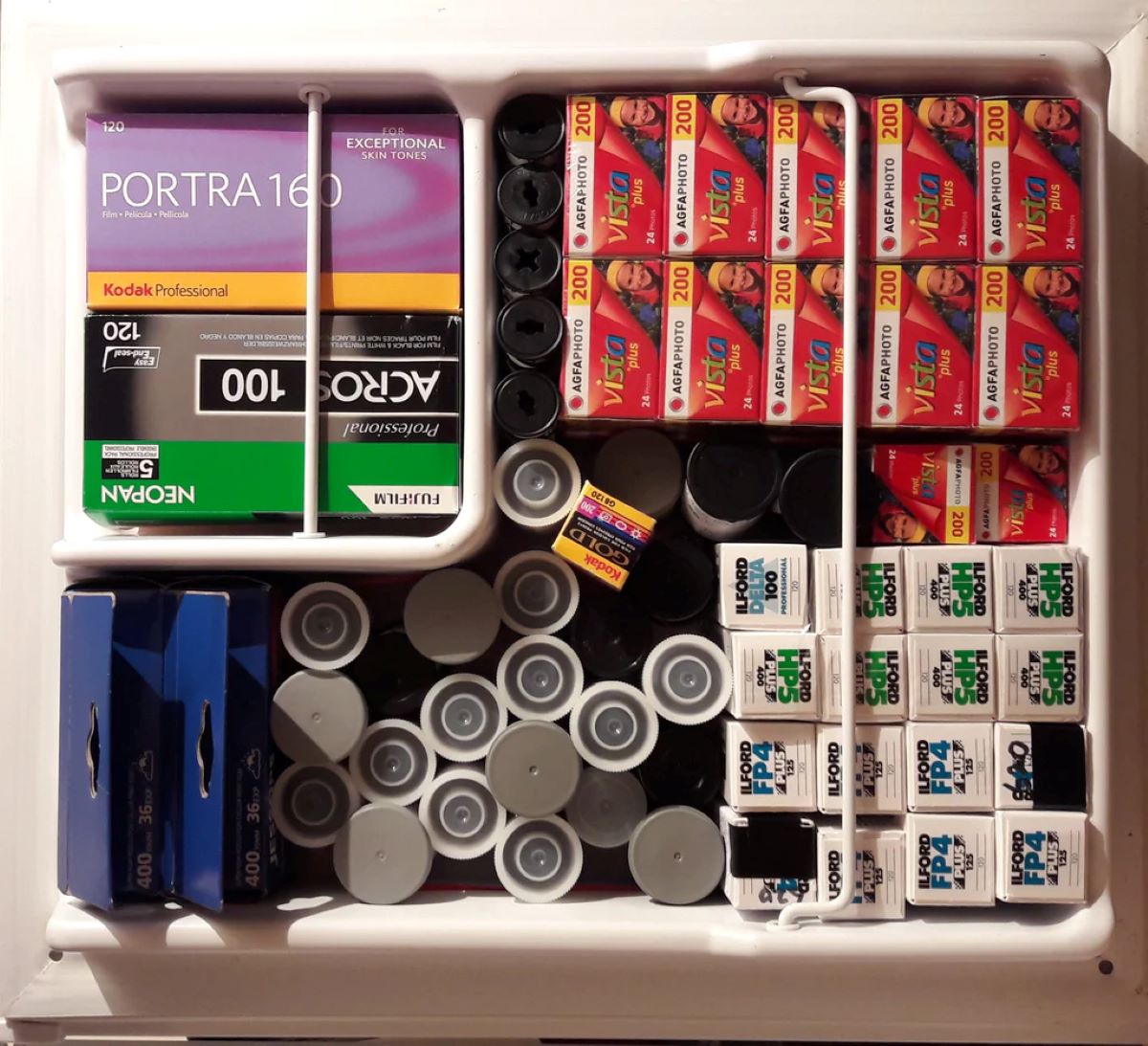

Articles
How To Store Film
Modified: January 6, 2024
Learn the best techniques for storing film in this informative article. Discover how to keep your film safe and preserved for years to come.
(Many of the links in this article redirect to a specific reviewed product. Your purchase of these products through affiliate links helps to generate commission for Storables.com, at no extra cost. Learn more)
Introduction
Welcome to the world of film photography! Whether you are a seasoned enthusiast or just starting out, one of the most important aspects of this beloved medium is proper film storage. Proper storage not only ensures the longevity and preservation of your precious film but also plays a pivotal role in maintaining the quality of your images.
As a film photographer, you understand the value of capturing moments using traditional methods. Film has a unique charm and aesthetics that digital cannot replicate. The texture, colors, and overall feel of analog photographs are unmatched. To ensure that you can continue to enjoy the beauty of film for years to come, it is crucial to store your film in the right conditions.
In this article, we will guide you through the importance of proper film storage and provide you with valuable tips on how to store your film correctly. From temperature and humidity control to light protection and handling techniques, we will cover all aspects to help you preserve your film collection and unleash its true potential.
Key Takeaways:
- Proper film storage is crucial for preserving the quality and longevity of your film collection. By understanding the importance of temperature and humidity control, light protection, handling and packaging, security measures, and regular inspection and maintenance, you can ensure that your cherished memories are protected for years to come.
- Choosing the right storage environment, maintaining stable temperature and humidity levels, and protecting film from excessive light exposure are crucial elements in film preservation. By following film storage tips and best practices, such as using archival-quality materials, maintaining a controlled environment, labeling and organizing, and handling film with care, you can further enhance the longevity of your film and enjoy the beauty of analog photography for years to come.
Read more: How To Store Polaroid Film
Importance of Proper Film Storage
Proper film storage is crucial for maintaining the quality and longevity of your film. Film is a delicate medium that is sensitive to environmental factors such as temperature, humidity, light, and even improper handling. Without proper storage, your film runs the risk of damage, degradation, and loss of image quality.
One of the primary reasons for carefully storing film is to prevent damage caused by fluctuations in temperature and humidity. Extreme temperatures can cause film emulsion to become brittle, resulting in cracking or flaking. High humidity levels can promote the growth of mold and fungus, which can irreversibly damage the film. Additionally, rapid changes in temperature and humidity can lead to the formation of condensation, affecting the integrity of the film and leading to image distortion.
Light is another crucial element to consider when storing film. Exposure to direct or prolonged light, especially UV radiation, can cause film to fade, lose contrast, and affect color accuracy. Film is particularly sensitive to light during the development and drying stages, so it’s important to store it in lightproof containers or storage areas.
Proper handling and packaging techniques are equally important in film storage. Fingerprints, dirt, and scratches can all impact the quality of your images. It is essential to handle film with clean, dry hands and avoid touching the emulsion side. Using archival sleeves, cans, or cases to store and organize your film will help protect it from physical damage.
Preserving the security of your film collection is also crucial. Film holds memories and artistic creations that are irreplaceable. Ensuring that it is stored in a secure location and taking precautions against theft or accidental damage is paramount in maintaining the integrity of your work.
By implementing proper film storage practices, you can extend the lifespan of your film, enhance the quality of your images, and have the assurance that your precious film memories will be well-preserved for future generations to enjoy.
Choosing the Right Storage Environment
When it comes to storing film, selecting the right environment is crucial for maintaining its quality and longevity. Here are some essential factors to consider when choosing the storage environment for your film:
1. Temperature: Film is sensitive to temperature, so it is important to store it in a cool and stable environment. The ideal temperature range for film storage is between 40°F (4°C) and 50°F (10°C). Avoid storing film in areas prone to extreme temperature fluctuations such as attics, garages, or storage units without climate control.
2. Humidity: Controlling the humidity levels is vital for film preservation. The recommended humidity range for film storage is between 30% and 50%. High humidity can lead to mold and fungus growth, while low humidity can cause film emulsion to become brittle. Consider using dehumidifiers or humidifiers in the storage area to maintain optimal humidity levels.
3. Ventilation: Proper ventilation helps in maintaining a stable environment and preventing the accumulation of moisture and odors. Ensure that the storage area has adequate airflow to prevent the buildup of condensation.
4. Stability: Choose a storage area that experiences minimal vibrations and movement. Extended exposure to vibrations can lead to subtle shifts in film emulsion layers, resulting in image distortion. It is advisable to avoid storing film near machinery, heavy traffic areas, or places prone to earthquakes.
5. Pest Control: Protect your film from pest infestations by taking appropriate pest control measures. Insects, rodents, and other pests can cause irreparable damage to your film. Make sure to inspect the storage area regularly and take necessary precautions to keep pests away.
6. Fire Safety: It is imperative to consider fire safety when selecting a storage area for your film. Avoid storing film in areas that are susceptible to fire hazards, such as near flammable materials or electrical wiring. Install smoke detectors and fire extinguishers in the storage area as an added precaution.
In addition to these factors, it is important to keep your film storage area away from chemicals, strong odors, and direct sunlight. Creating a dedicated space specifically designed for film storage will help ensure the longevity and quality of your film collection.
Temperature and Humidity Control
Temperature and humidity control are crucial aspects of proper film storage. Maintaining optimal levels of temperature and humidity helps to protect the integrity and longevity of your film. Here’s a closer look at temperature and humidity control in film storage:
1. Temperature: Film should be stored in a cool environment to prevent any potential damage. The ideal temperature range for film storage is between 40°F (4°C) and 50°F (10°C). Avoid storing film in areas that are subject to extreme temperature fluctuations, as this can cause the film to deteriorate. Rapid changes in temperature can lead to condensation, which can damage the film and affect image quality.
2. Humidity: Controlling humidity levels is crucial to prevent mold, fungus, and other moisture-related issues. The recommended humidity range for film storage is between 30% and 50%. High humidity can promote mold and fungus growth, while low humidity can cause the film to become brittle. To control humidity, consider using dehumidifiers or humidifiers in the storage area. This helps maintain a stable environment and prevents fluctuations that could harm the film.
3. Monitoring: It is essential to regularly monitor and control the temperature and humidity levels in your storage area. Use a hygrometer to measure humidity and a thermometer to monitor temperature. These tools will help you ensure that the conditions remain within the optimal range for film storage.
4. Climate-Controlled Storage: If you have a large film collection or live in an area with extreme climate conditions, you may want to consider using a professional climate-controlled storage facility. These facilities are designed to maintain consistent temperature and humidity levels, providing an ideal environment for film storage. Climate-controlled storage also offers additional security measures to protect your collection.
5. Avoiding Damp Areas: It is important to avoid storing film in areas that are known to be damp or prone to moisture buildup. Basements, attics, and areas near water sources should be avoided, as they can expose the film to excess humidity. If you have no other option but to store film in such areas, use dehumidifiers to control moisture levels.
6. Transportation: When transporting film, particularly in humid or hot environments, take extra precautions to prevent damage. Use insulated containers or coolers with ice packs to maintain a stable temperature and prevent the film from being exposed to excessive heat or humidity during transportation.
By implementing temperature and humidity control measures, you can ensure the optimum preservation of your film and protect it from potential damage or deterioration due to environmental factors. Remember to regularly check and maintain the ideal conditions in your storage area to safeguard your film collection for years to come.
Light Protection
Light protection is an essential consideration in proper film storage. Film is highly sensitive to light, especially ultraviolet (UV) radiation, which can quickly degrade the quality of your images. To maintain the integrity of your film, it is crucial to protect it from excessive exposure to light. Here are some tips for effectively protecting your film from light:
1. Dark Storage: Store your film in a dark environment to minimize light exposure. Choose a storage area that is shielded from natural and artificial light sources. Avoid storing film in areas with windows or areas that receive direct sunlight.
2. Light-Blocking Containers: Use light-blocking containers or sleeves to store your film. These containers are designed to block out light and protect the film from exposure. Look for archival-quality sleeves or containers that are specifically designed for film storage.
3. Lightproof Storage Cabinets: Consider investing in lightproof storage cabinets or drawers for your film collection. These cabinets are specially designed to block out light and provide an additional layer of protection for your film. Make sure the cabinets are properly sealed to prevent any light leakage.
4. Avoiding Fluorescent or Direct Light: Fluorescent lights emit a significant amount of UV radiation, which can be harmful to film. Avoid storing film in areas with fluorescent lighting or direct sunlight. If you have no choice but to store film in a room with fluorescent lights, consider using UV-filtering curtains or blinds to minimize UV exposure.
5. Film Canisters and Film Rolls: When not in use, store your exposed film in lightproof canisters or film rolls. These containers are designed to block out light and protect the film from further exposure. Keep in mind that exposed film is more susceptible to light damage than unexposed film, so it is essential to handle and store it with extra care.
6. Handling Procedures: When handling film, minimize exposure to light as much as possible. Work in a dimly lit room or use a red safe light, as red light has a minimal impact on film. Remember to handle film with clean, dry hands and avoid touching the emulsion side, as fingerprints can also affect the image quality.
By effectively protecting your film from light, you can preserve its colors, contrast, and overall quality. Proper light protection ensures that your film retains its original characteristics and allows you to enjoy the true beauty of analog photography for years to come.
Store film in a cool, dry place away from direct sunlight and extreme temperatures. Keep it in its original packaging or a light-tight container to protect it from exposure. Avoid storing film in humid environments to prevent damage.
Read more: How To Store 35Mm Film
Handling and Packaging
Proper handling and packaging techniques are essential for maintaining the quality and longevity of your film. By following these guidelines, you can minimize the risk of physical damage and ensure that your film remains in optimal condition:
1. Clean and Dry Hands: Before handling film, ensure that your hands are clean and dry. Any dirt, oil, or moisture on your hands can transfer to the film and affect the image quality. Avoid using lotions or creams that may leave residue on your hands.
2. Emulsion Side: Handle the film by the edges to avoid touching the emulsion side. The emulsion side contains the light-sensitive layer of the film and is susceptible to damage from fingerprints and scratches. Touching the emulsion side can lead to smudges or marks that may affect image sharpness and clarity.
3. Film Canisters: When not in use, store your film in proper film canisters. These canisters protect the film from light exposure, dust, and physical damage. Make sure that the canisters are tightly sealed to keep out moisture or contaminants.
4. Archival Sleeves: For long-term storage and organization, consider using archival-quality sleeves. These sleeves provide an extra layer of protection against dust, fingerprints, and scratches. Look for acid-free and PVC-free sleeves to prevent any potential damage to the film over time.
5. Labeling: Label each film canister or sleeve with relevant information, such as the film type, film speed, and the date it was shot. Proper labeling helps you keep track of your film inventory and simplifies the retrieval process when needed.
6. Storage Boxes or Cases: Use storage boxes or cases designed specifically for film to keep your collection organized and protected. These containers offer an additional layer of shielding against light, dust, and physical damage. Opt for acid-free boxes made from archival materials to maximize the longevity of your film.
7. Avoid Extreme Conditions: Do not expose your film to extreme temperatures or humidity. Avoid storing film in areas prone to temperature fluctuations, such as attics or garages. Additionally, keep film away from areas with excessive moisture or areas at risk of water damage.
8. Transportation: When transporting film, use padded cases or bags designed specifically for film storage. These provide extra protection against physical shocks or bumps. Avoid leaving film in a hot car or any environment that may subject it to extreme temperature conditions.
9. Regular Inspection: Periodically inspect your film for signs of damage, including mold, discoloration, or physical defects. Regular inspection allows you to address any issues promptly and prevent further deterioration or loss of image quality.
By following these handling and packaging guidelines, you can ensure the safety and integrity of your film collection. Proper handling and packaging practices will help preserve the quality of your images and extend the lifespan of your film for future enjoyment.
Security Measures
Ensuring the security of your film collection is essential to protect your valuable and irreplaceable memories. Implementing proper security measures will not only safeguard your film from theft but also shield it from accidental damage. Here are some security measures to consider for your film storage:
1. Locked Storage: Store your film in a locked area to prevent unauthorized access. Consider using lockable cabinets, drawers, or dedicated film safes to create a secure storage space. Ensure that only trusted individuals have access to the keys or combination codes.
2. Alarm Systems: Install an alarm system in your film storage area to deter theft and provide an added layer of security. Choose a system that is specifically designed to protect valuable assets and consider incorporating motion sensors, door/window sensors, and security cameras for enhanced protection.
3. Surveillance Cameras: Install security cameras to monitor the storage area. Visible cameras act as a deterrent to potential intruders, while hidden cameras can provide additional evidence in the event of theft or unauthorized access. Make sure the cameras are strategically placed to cover all angles and entry points.
4. Access Control: Implement access control measures to limit entry to your film storage area. This can include using keycards, biometric access systems, or password-protected locks. Restricting access to only authorized individuals significantly reduces the risk of theft or damage.
5. Fire Protection: Install fire prevention and suppression systems in your storage area, such as smoke detectors and fire extinguishers. Consider using fire-resistant storage containers or cabinets to provide an extra layer of protection against potential fire hazards.
6. Insurance: Insure your film collection to protect against loss, theft, or damage. Contact your insurance provider to ensure that your film is adequately covered under your existing policy or explore separate coverage options specifically designed for valuable collections.
7. Off-Site Storage: Consider utilizing off-site storage facilities for added security. Professional storage facilities often have advanced security measures in place, including 24/7 surveillance, climate control, and additional protection against theft and environmental damage.
8. Inventory Management: Maintain a detailed inventory of your film collection, including a record of each film’s content, condition, and location. Regularly update and review the inventory to ensure that everything is accounted for and easily accessible when needed.
9. Digital Backups: Create digital backups of your film images as an additional security measure. Scan your film negatives or slides to create high-resolution digital files that can be stored on secure hard drives or in cloud-based storage services. This ensures that even if physical film is lost or damaged, you still have a copy of your images.
By implementing these security measures, you can have peace of mind knowing that your film collection is well-protected. Proper security practices are essential to safeguard your precious memories and ensure their preservation for future generations.
Regular Inspection and Maintenance
Regular inspection and maintenance are key components of proper film storage. By routinely assessing the condition of your film collection, you can identify and address any potential issues before they worsen. Here are some important steps to follow for regular inspection and maintenance:
1. Visual Inspection: Periodically examine your film for any signs of damage, such as mold, discoloration, or physical defects. Inspect each film canister or sleeve individually to ensure that they are in good condition and properly sealed.
2. Cleaning: If you notice any dust or debris on the film or its packaging, gently clean it using a soft, lint-free cloth or a bulb blower. Be cautious not to scratch or damage the film surface while cleaning. Avoid using any liquids unless recommended by a professional archival technician.
3. Mold Prevention: If you spot any signs of mold growth, take immediate action to prevent further damage. Remove affected films from the storage area and isolate them to prevent spreading of the mold. Consult a professional film archivist or conservator for guidance on mold remediation techniques.
4. Rehousing: Over time, the original packaging or sleeves of film may degrade or become damaged. Consider rehousing the film in new, archival-quality containers or sleeves to ensure continued protection. This is especially important for films with deteriorating packaging or films that have been exposed to adverse conditions.
5. Climate Control Systems: Regularly check and maintain any climate control systems, such as dehumidifiers or humidifiers, in your film storage area. Ensure that these systems are functioning properly and that humidity and temperature levels remain within the recommended range for film storage.
6. Security Check: Inspect the security measures in place for your film storage, such as locks, alarm systems, and surveillance cameras. Ensure that they are in proper working order and that any passwords or access codes are up to date. Make any necessary adjustments or repairs as needed.
7. Film Handling: Revisit proper film handling practices and educate anyone who may have access to the film collection. Reinforce the importance of clean and dry hands, avoiding touching the emulsion side, and using proper equipment and techniques during film handling and examination.
8. Inventory Updates: Regularly update your inventory records to reflect any changes in your film collection. Update information on new additions, removals, or any notable details regarding the films. This will help you keep track of your collection and provide an organized record of its condition.
9. Consultation: If you have any concerns or questions about the condition of your film collection, seek guidance from professional film archivists or conservators. They can provide valuable advice regarding film preservation, storage techniques, and maintenance best practices.
By conducting regular inspections and maintenance, you can proactively address any issues that may arise and ensure the longevity and health of your film collection. Regular care and attention will help preserve your cherished memories and enable you to continue enjoying the beauty of film photography for years to come.
Film Storage Tips and Best Practices
To ensure the longevity and preservation of your film collection, it is important to follow these film storage tips and best practices:
1. Store in a dedicated space: Designate a specific area or storage space solely for your film collection. This helps maintain a controlled environment and reduces the risk of accidental damage or exposure to unfavorable conditions.
2. Keep film upright: Store film canisters or sleeves in an upright position to prevent any potential warping or distortion. This also helps to minimize the risk of films sticking together or becoming difficult to retrieve.
3. Use archival-quality materials: Invest in archival-quality sleeves, canisters, and storage boxes made from acid-free and PVC-free materials. These materials are specifically designed to provide protection against deterioration and ensure the long-term preservation of your film.
4. Maintain consistent temperature and humidity: Keep the storage environment at a stable temperature between 40°F (4°C) and 50°F (10°C) and maintain humidity levels between 30% and 50%. Fluctuations in temperature and humidity can cause damage to the film, so it is important to monitor and control these factors.
5. Avoid extreme conditions: Protect your film from exposure to extreme temperatures, humidity, and direct sunlight. Avoid storing film in areas prone to rapid changes in temperature, such as attics or basements, as well as areas with high moisture content.
6. Regularly rotate stock: If you have a large film collection, rotate the stock regularly to ensure even usage and prevent films from sitting in storage for extended periods. This helps maintain the quality and condition of the film over time.
7. Label and organize: Clearly label and organize your film collection to easily identify and locate specific rolls or canisters. Use a consistent labeling system that includes details such as film type, date, and any other relevant information to streamline your workflow and prevent confusion.
8. Limit exposure to air: Minimize the amount of time film is exposed to the air by promptly returning it to its protective canister or sleeve after use. This reduces the risk of dust, moisture, and contaminants entering the film and compromising its integrity.
9. Avoid magnetic fields: Keep film away from strong magnetic fields, such as speakers or electronic devices, as they can potentially erase or distort the film’s images. Store film in a location that is far removed from any such magnetic sources.
10. Handle with care: Handle film with clean, dry hands and avoid touching the emulsion side. Wear cotton gloves if necessary. Take caution when using film cameras to avoid mishandling or dropping the film during loading or unloading.
By following these film storage tips and best practices, you can ensure the quality and longevity of your film collection. Implementing proper storage techniques and maintaining a controlled environment will help preserve your cherished memories and allow you to continue enjoying the beauty and artistry of film photography for years to come.
Read more: Where Was Home Improvement Filmed
Conclusion
Proper film storage is essential for preserving the quality and longevity of your film collection. By understanding the importance of temperature and humidity control, light protection, handling and packaging, security measures, regular inspection and maintenance, and following best practices, you can ensure that your film remains in optimal condition and that your cherished memories are protected for years to come.
Choosing the right storage environment, maintaining stable temperature and humidity levels, and protecting film from excessive light exposure are crucial elements in film preservation. Proper handling and packaging techniques minimize the risk of physical damage, while security measures such as locked storage, alarms, surveillance cameras, and off-site storage provide added protection against theft and accidental damage.
Regular inspection and maintenance allow you to proactively address any issues that may arise, ensuring that your film collection remains in pristine condition. By following film storage tips and best practices, such as using archival-quality materials, maintaining a controlled environment, labeling and organizing, and handling film with care, you can further enhance the longevity of your film and enjoy the beauty of analog photography for years to come.
Remember, the artistry and nostalgia of film photography are invaluable. By giving proper attention and care to your film storage, you can ensure the preservation of your precious memories, as well as the continued enjoyment of the tactile and artistic process that film photography offers.
Frequently Asked Questions about How To Store Film
Was this page helpful?
At Storables.com, we guarantee accurate and reliable information. Our content, validated by Expert Board Contributors, is crafted following stringent Editorial Policies. We're committed to providing you with well-researched, expert-backed insights for all your informational needs.

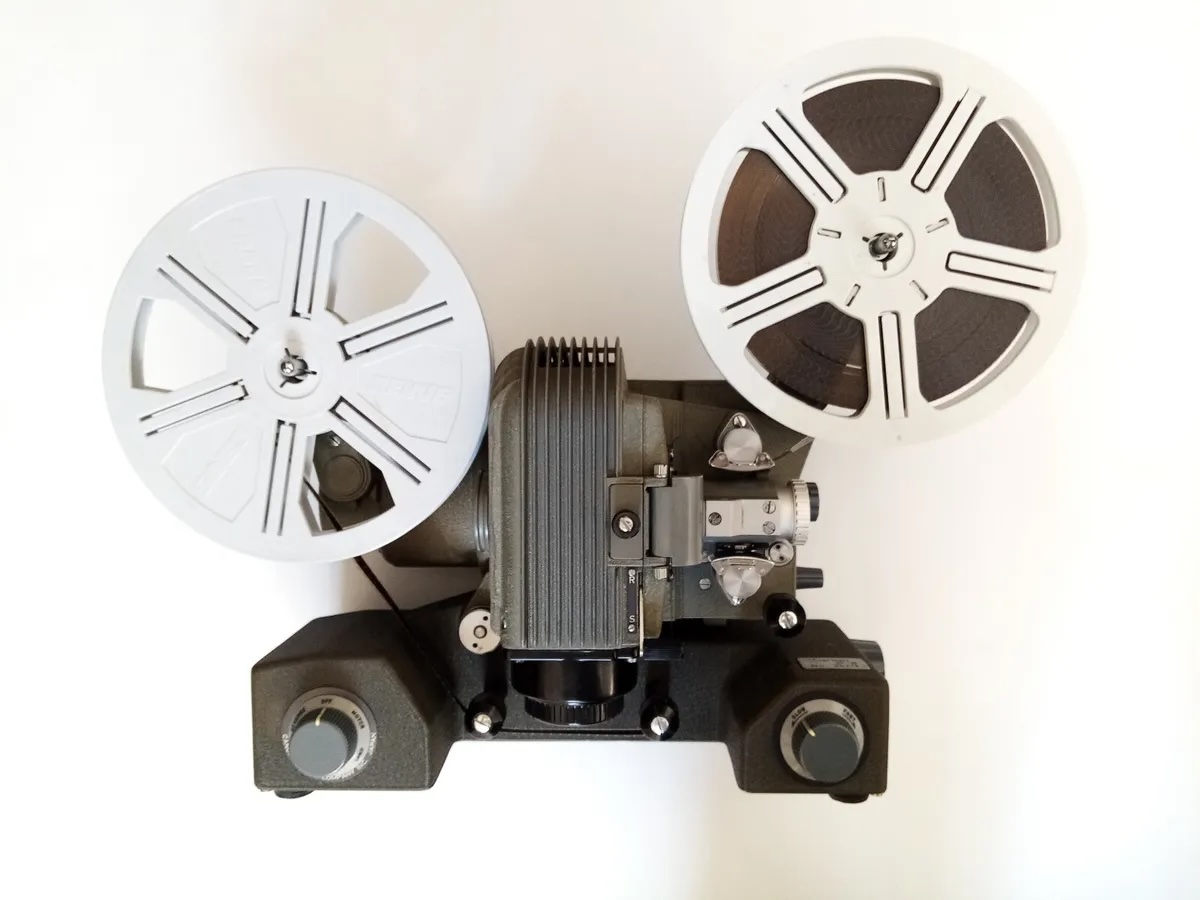
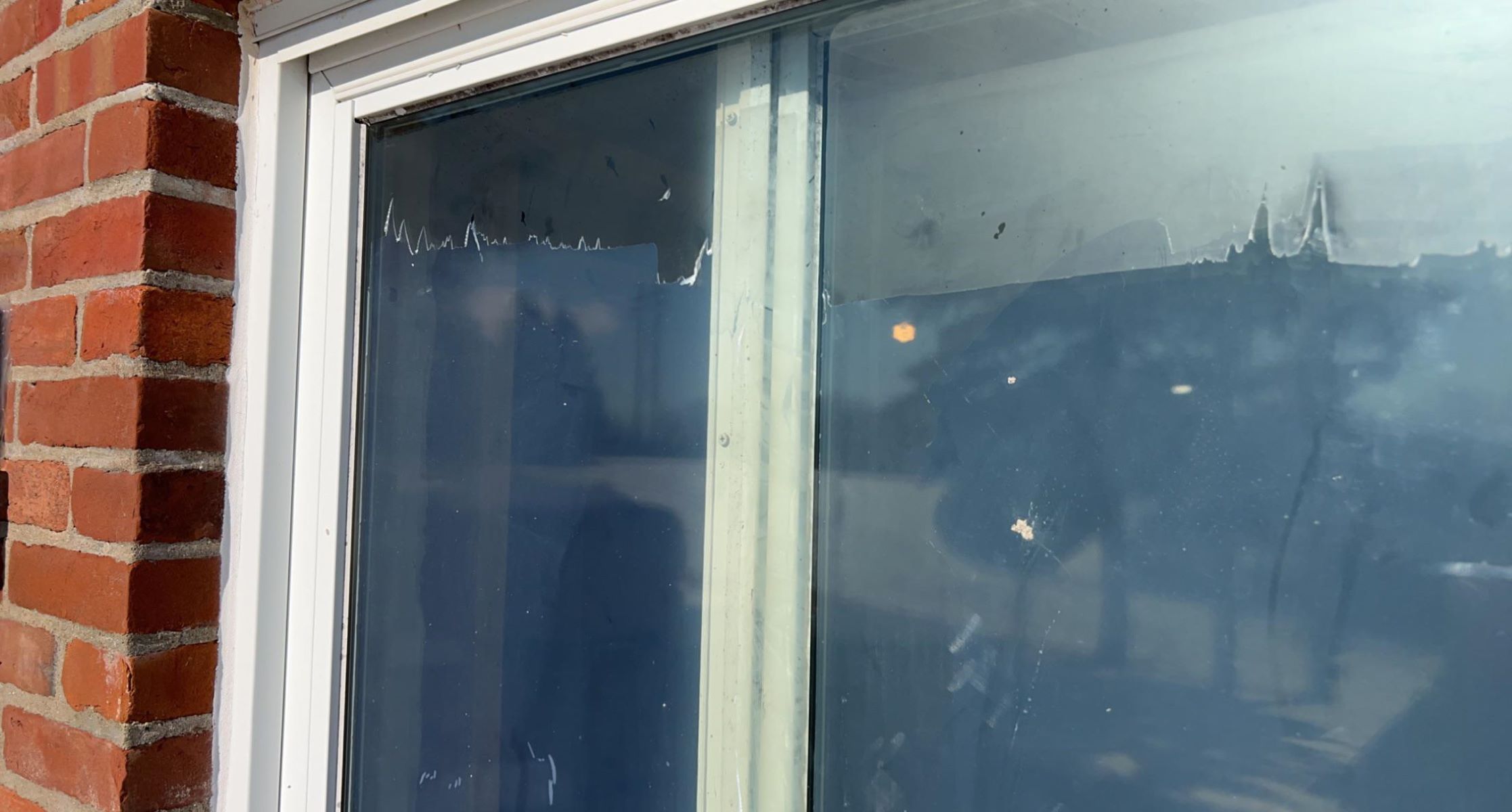



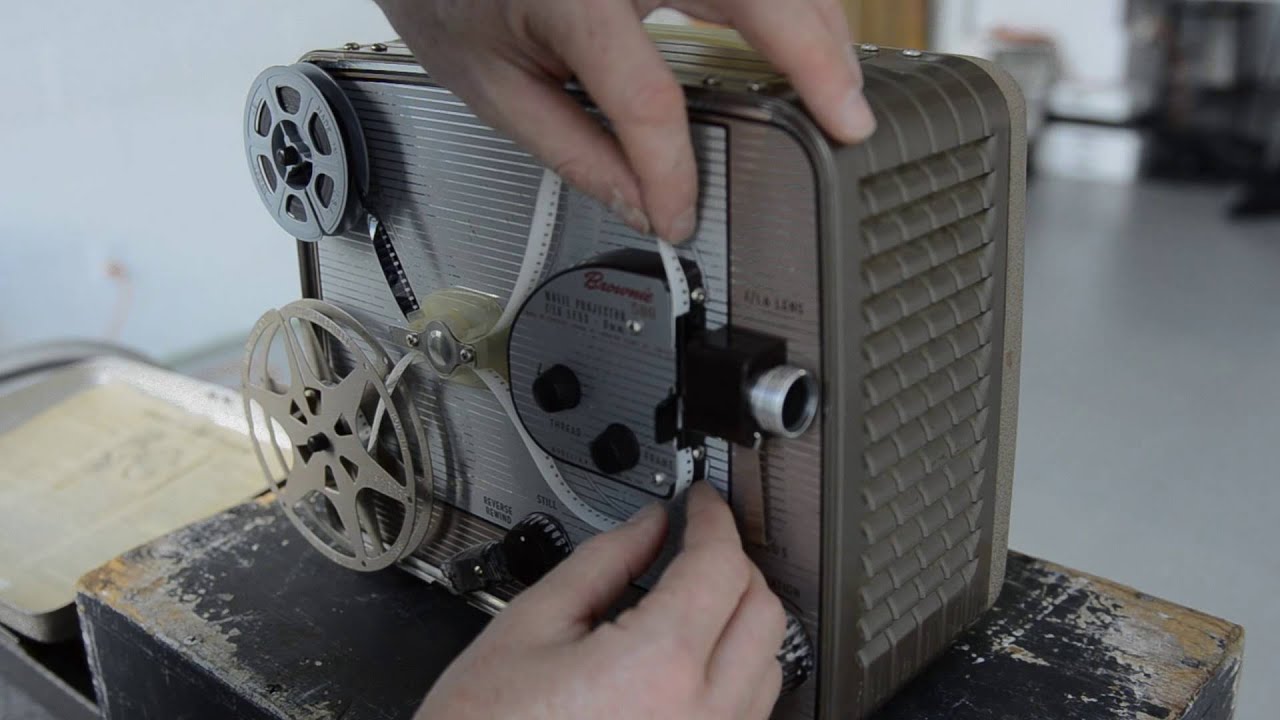


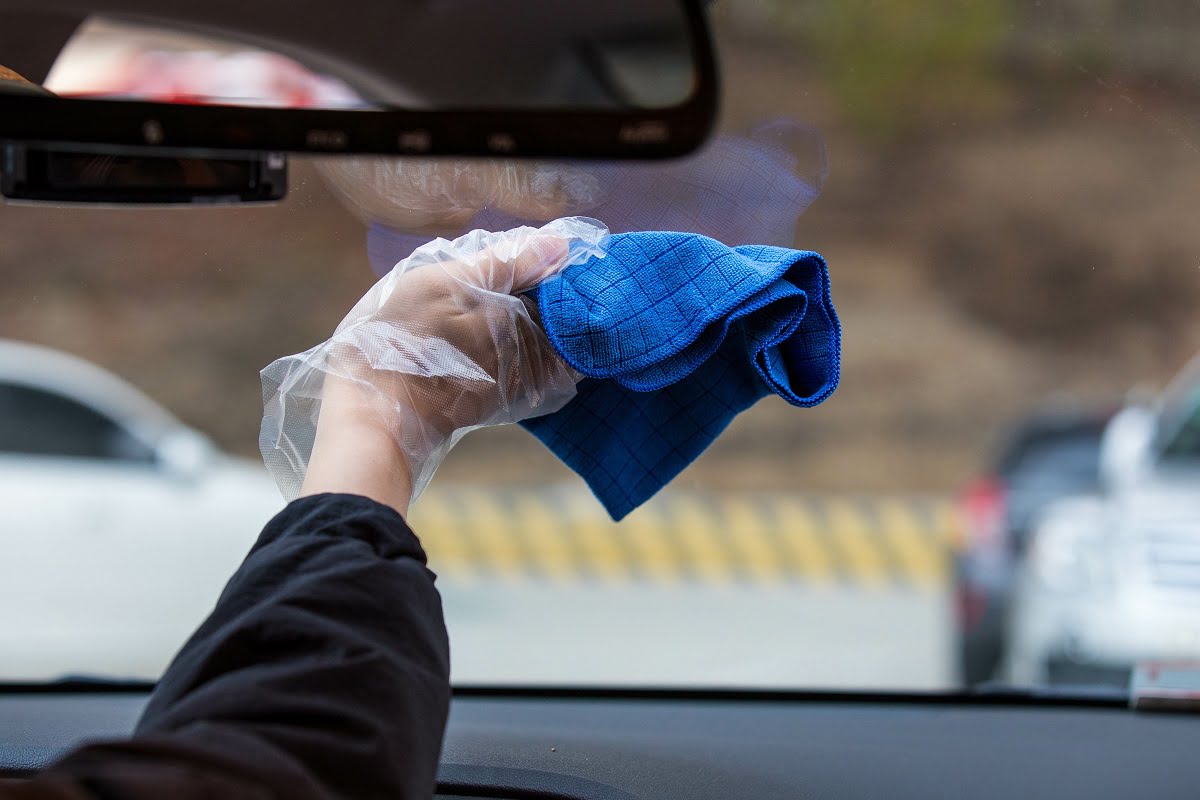
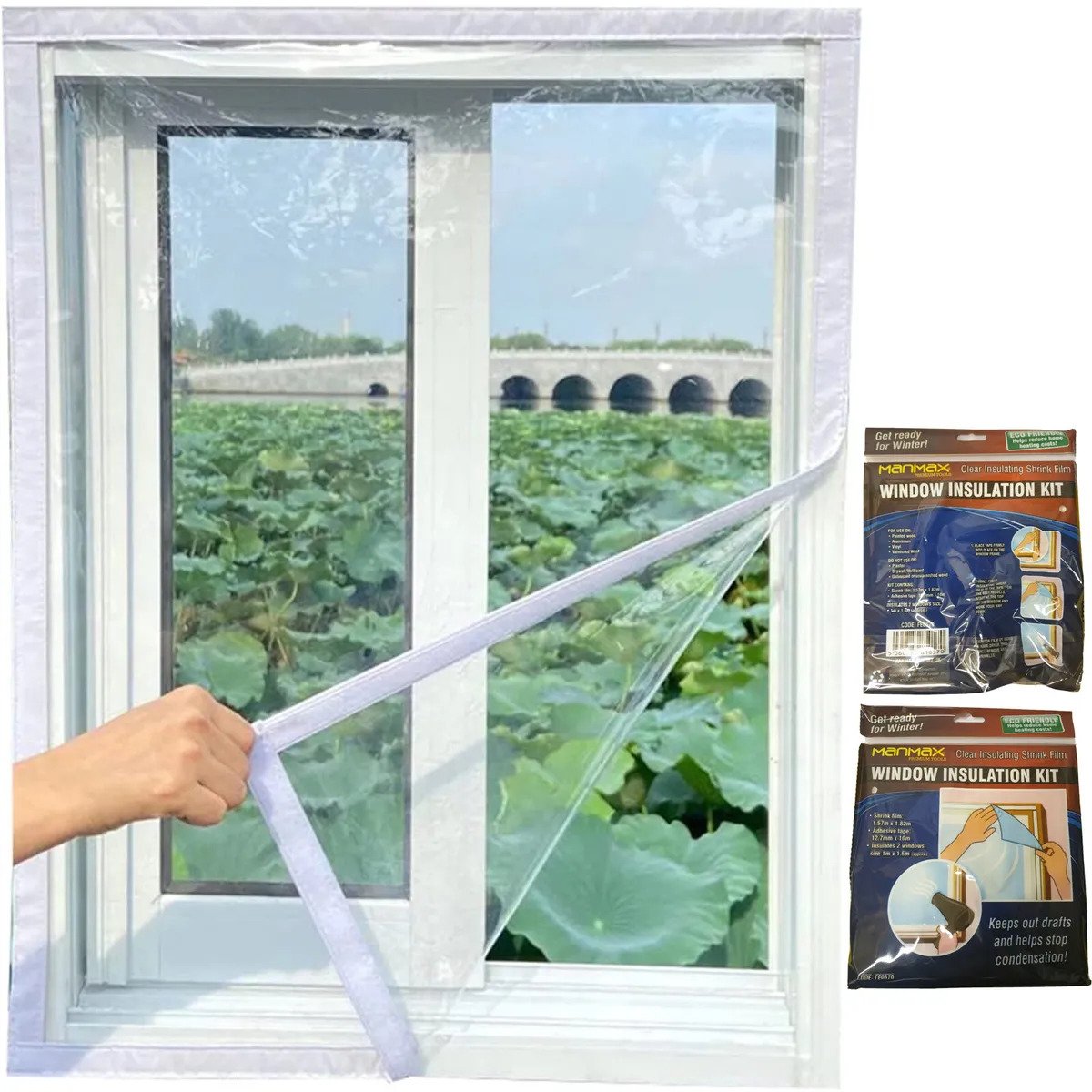



0 thoughts on “How To Store Film”